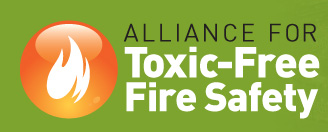  |
|||
July 24, 2012
Vote to Protect Environmental Health on Wednesday
State legislators and fire fighters submitted sign on letters expressing outrage at chemical industry tactics of deception regarding health impacts from flame retardants and called for a hearing. Dirty tricks from the chemical industry to avoid regulation of their products will be a focus, sparked by a Chicago Tribune investigation. Wednesday, this committee will vote on S. 847, the Safe Chemicals Act. This long-awaited action will be witnessed by thousands of Americans, including members of the National Environmental Justice Advisory Council, who meet in Washington D.C. this week. “This is a top priority for Environmental Justice leaders, and people and communities of color,” said Jose Bravo, Executive Director of the Just Transitions Alliance. “Workers, people of color and low-income communities are all disproportionately impacted,” Bravo added. “We call upon U.S. Senators to do the right thing and vote yes for the Safe Chemicals Act, to keep people from becoming sick from chemical exposure.”
“We can’t shop our way out of exposure to toxic flame retardant chemicals. However, better regulation of chemicals can address and solve this concerning problem,” said Sarah Janssen PhD, MPH, MD, senior scientist at the Natural Resources Defense Council. “What is important now is to keep the pressure on our public officials and state and federal agencies, to ensure the changes under way continue. Immediate and effective state and federal action to eliminate the use of toxic flame retardants goes hand-in-hand with ensuring Congress reforms chemical laws to protect our health.”
“We’re glad that flame retardants are the subject of discussion in an important Senate hearing today. Representatives are finally beginning to see that passing the Safe Chemicals Act is long overdue,” comments Kathleen A. Curtis, LPN, coordinator, Alliance for Toxic Free Fire Safety and Executive Director of Clean & Healthy New York.
For Media Assistance, contact: Stephenie Hendricks, stephdh@earthlink.net 415 258-9151. Available for Interviews
Gigi Lee Chang, CEO of Healthy Child, Healthy World. Contact Margie Kelly, 541-222-9699., margie@healthychild.org. Gigi can address how important it is to pass legislation that protects children's health and encourages manufacturers to choose safer alternatives to toxic chemicals. Kathy Curtis, LPN, Coordinator for the Alliance for Toxic Free Fire Safety, 518.708.3922. clean.kathy@gmail.com. Ms. Curtis can explain why failure with federal chemical regulation has contributed to the halogenated flame retardant chemical problem, and how states are stepping up across the nation to restrict the chemicals. Sarah Janssen, MD, PhD, senior scientist at the Natural Resources Defense Council, 415.875.6126, sjanssen@nrdc.org. Dr. Janssen can address health effects linked to flame retardant chemicals exposure. Ana Mascareñas, Policy & Communications Coordinator, Physicians for Social Responsibility - Los Angeles (PSR-LA) 213 689-9170, amascarenas@psr-la.org. Ana can address CA policy efforts to stop the halogenated flame retardants, and efforts by the chemical industry to mislead leaders from communities of color on the science and hazards of the chemicals. Richard Moore, Los Jardines Institute in Albuquerque, NM, 505.301.0276, ljinewmexico@gmail.com. Richard can talk about environmental justice issues and flame retardants. Richard can address the EPA National Environmental Justice Advisory Council (NEJAC) situation with flame retardants and chemicals of concern to fenceline communities. Tony Stefani, cancer survivor, retired San Francisco Firefighter Captain and founder, San Francisco Firefighters Cancer Prevention Foundation. Contact Tony by email, stefanit@sbcglobal.net, or Stephenie Hendricks can assist (see Stephenie’s contact info above)
|
|||




